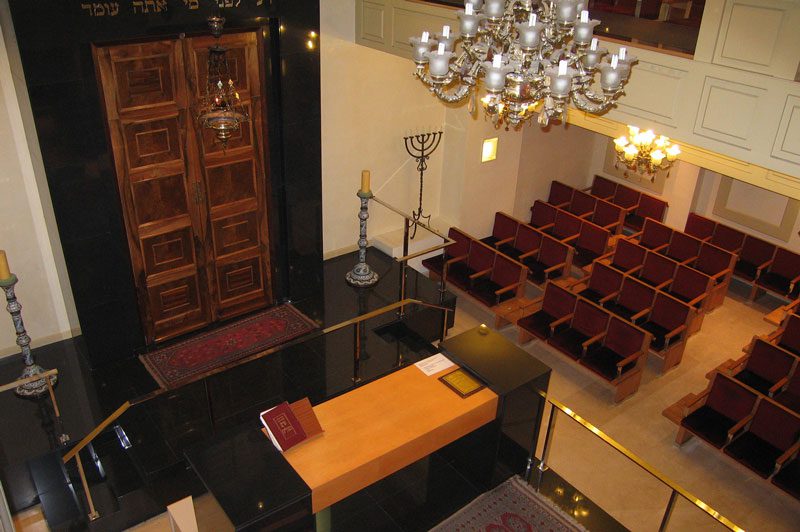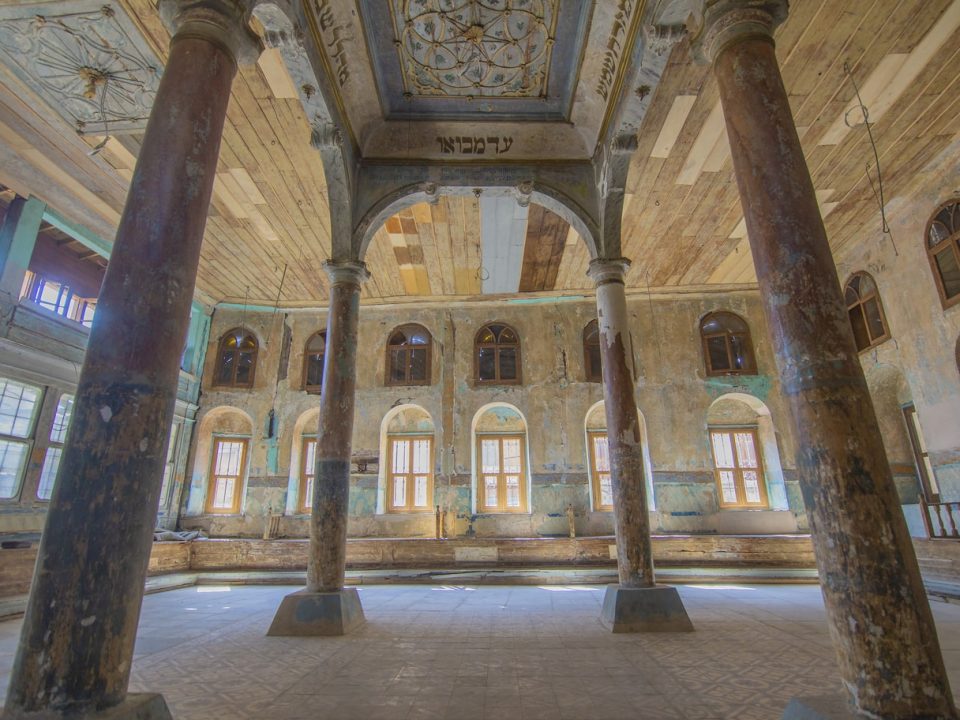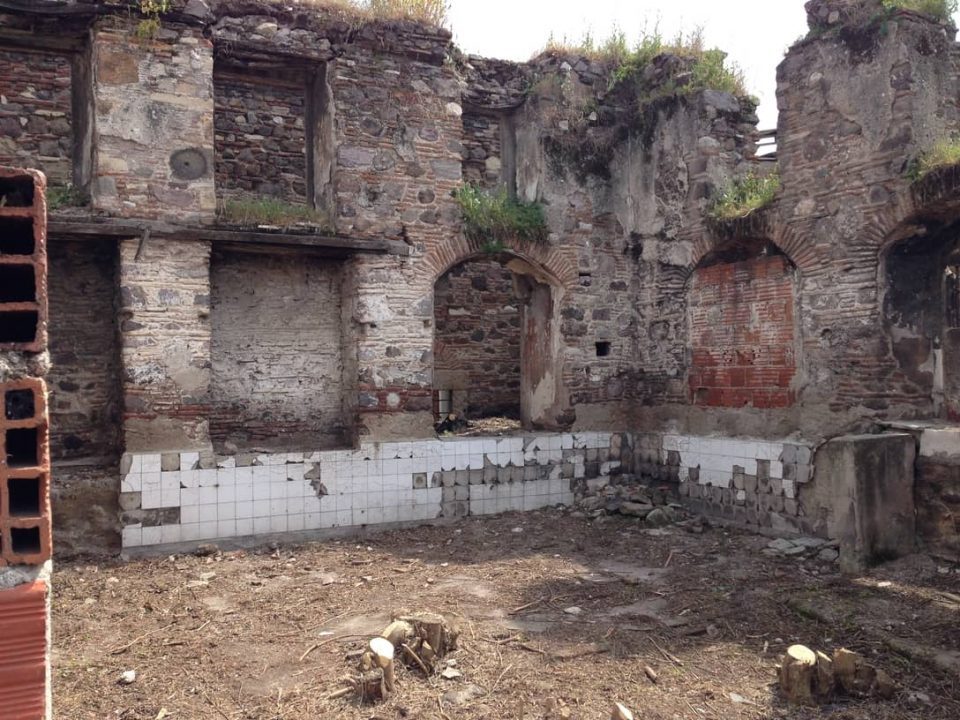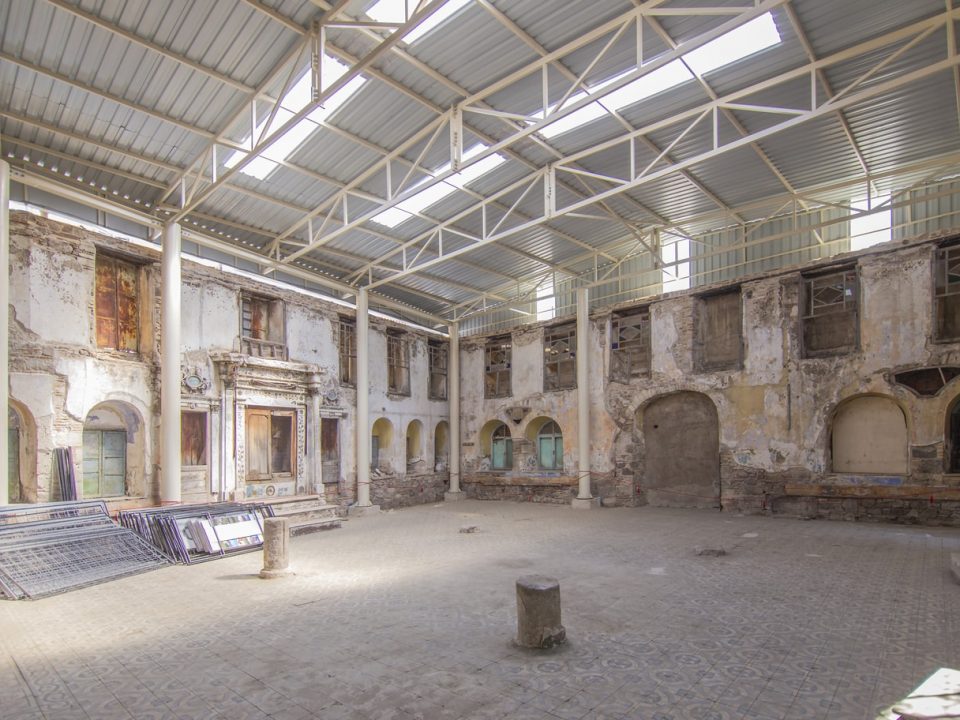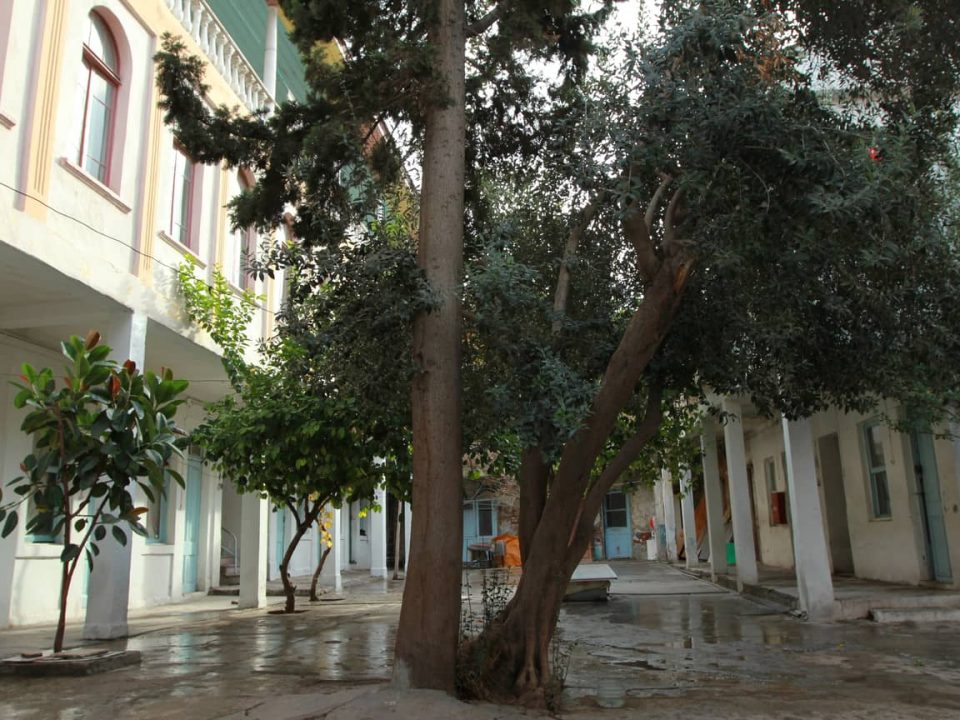The Portuguese Synagogue is the only synagogue in Izmir which identifies the origin of its founders. It is one of the six synagogues known to have existed in the period of Chief Rabbi Joseph Escapa, i.e., as of 1620s, and is referred to be the largest synagogue in Izmir in that period.
Portuguese Synagogue, considered to be the fortress of the anti-Sabbataists, closed its gates to Sabbatai Zvi when his movement expanded. On the other hand, Sabbatai and his supporters entered the synagogue by breaking the gates and chased away the rabbis who were the leaders of their opponents. Salomon Algazi, one of the founders of Algazi Synagogue, was among them.
When Sabbatai Zvi declared himself as the Messiah of the Jews and 18th June 1666 as the deliverance day in that raid, Portuguese Synagogue became the headquarters of the Sabbataist movement and a large group of the Jews of Izmir joined the movement.
Portuguese Synagogue was burnt in 1976 and restored in 2018, to serve as a social activities center.
926 Sok. No:44, Konak – İzmir
+90 232 464 07 18
ebrulitur@ebruliturizm.com.tr
Website
The Epicentre visitor centre in Tremp has a small exhibition space where the role of the Lleida Pyrenees in the escape of hundreds of Jewish refugees from wartime France to the Iberian Peninsula is explained.
A document beloning to Salomon Ben Ezra, who died in 1688, mentions that Muslim Turks prayed in the only existing synagogue of Izmir. The period mentioned in this document is thought to coincide with the period of the Turkish conquest of Izmir and that they prayed in this synagogue since there was no mosque in the city.
This synagogue, surviving through the dangers of fire and earthquakes many times, was damaged in the fire of 1841 and Daniel de Sidi had it repaired in 1851.
The synagogue originally built in a central plan. Inspired by European synagogue architecture, in the early twentieth century, the Tevah was moved from the center to the sides of the Ehal.937 Sok. No:5, Konak – İzmir
+90 232 464 07 18
ebrulitur@ebruliturizm.com.trLocated in the heart of the old Jewish quarter, which is the historical market place of Izmir, the synagogue was known with two names. “Orahim” (in Hebrew) and “Foresteros” (in Spanish), meaning “foreigners” or “guests” in both languages indicates that it served new Jewish immigrants who came to Izmir and joined the local Jewish community. The synagogue was probably built in the 17th century and was active until it was destroyed by a fire. After it collapsed and ceased to function as a synagogue, its courtyard was transformed to a kosher poultry slaughterhouse where atonement ceremonies were held before Yom Kippur.
927 Sok. No: 79, Konak – İzmir
+90 232 464 07 18
ebrulitur@ebruliturizm.com.tr
Website
Leaving behind the head of the cathedral, Alemanys street and Pere de Rocabertí¬ street lead to the former Caserna dels Alemanys, the site of an old military barrack today converted into a romantic garden amongst ruins and stretches of the wall. It is located on the highest point of the city and constitutes the vertex of the triangle where the former Roman Gerunda takes shape. It is in this complex where the Gironella Tower is situated, famous for serving as a refuge for Jews who were able to escape the slaughter and sacking of the of 1391.
Hevra Sinagogue’s name is mentioned in very old texts as “Talmud Torah”. Known to have existed during the period of Joseph Escapa, in the 17th century, this synagogue was burnt in fires and rebuilt several times. Rebuilt after the fire in 1838 by Chelebi and Menahem Hacez brothers, it was burnt again in the fire of 1841 and remained in a ruined state for many years.
Built in the central plan, the Hevra Synagogue is a typical Izmir synagogue with its Tevah, triple Ehal composition and Midrash. The Tevah here, alike to Shalom Synagogue, was in the form of the prow of a galley inspired by the Ottoman galleys which brought the Jews from Spain. The huge number of the Sefer Torah (Torah scrolls) once available in the Hevra Synagogue, ensured a prestigious status.Kortijos (cortejos) were the dwellings carrying the architectural characteristics brought to Izmir by the Sephardic Jews as they migrated from the Iberian Peninsula to the Ottoman Empire. Surrounded by the high walls of a two-storied building, the rooms of a kortijo would be facing a courtyard with a faucet or well, serving like a common guest room.
Kurtuluş Mah., Anafartalar Cad., Konak – İzmir
+90 232 464 07 18
ebrulitur@ebruliturizm.com.tr
Website
A few metres on from Força street, departing from the Square of the Cathedral, on the right there is the Institut Vell Square. Here, a hole for the mezuzah, one of the distinguishing features identifying the Jewish houses, can still today be seen on one of the stones of the door of the house number 33. The mezuzah is a rolled parchment which contains a Jewish prayer. In this square there is also the access to the City History Archives, which preserve important documents related with the history of the Jewish community.

